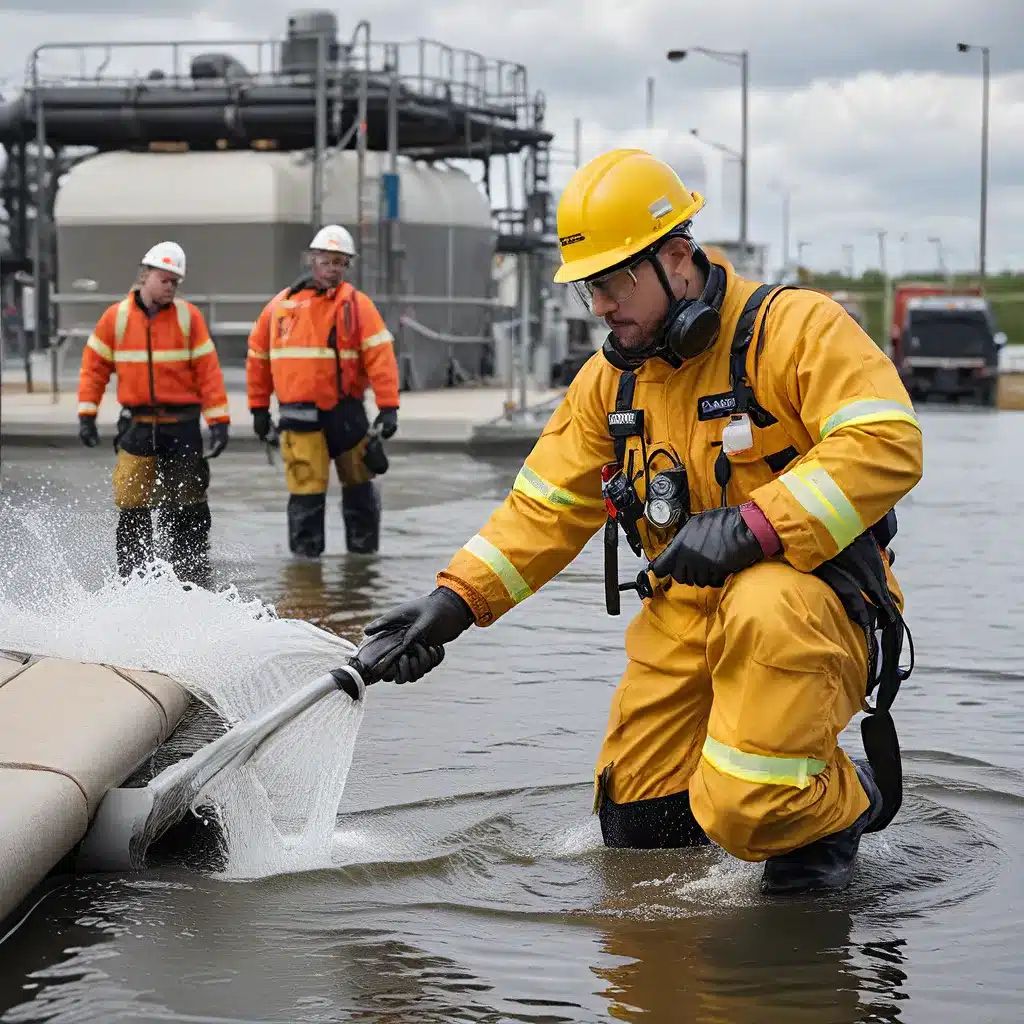
Disasters – they strike without warning, like a bolt from the blue, shaking our carefully constructed worlds to the core. Whether it’s a natural calamity or a human-made crisis, the aftermath can be devastating, leaving behind a trail of destruction that seems insurmountable. But amidst the chaos, there is a group of unsung heroes – the water treatment professionals who rise to the occasion, armed with the knowledge and expertise to restore order and ensure the flow of clean, safe water.
As I delve into the intricate world of emergency response in water treatment, I can’t help but be in awe of the incredible feats these individuals accomplish. It’s a dance, a carefully choreographed ballet, where every step must be precise, every decision crucial. And let me tell you, it’s no easy task.
Picture this: a devastating hurricane has just ripped through your community, leaving homes and businesses in shambles. The power grid is down, and the water treatment plant is in disarray. The residents are desperate, their taps running dry, their health at risk. Enter the water treatment experts, their sleeves rolled up, determination etched on their faces. They spring into action, assessing the damage, devising a plan of attack.
As the director of the disaster management program at Florida International University once told me, “The first 72 hours are crucial. That’s when lives are saved, and the foundation for recovery is laid.” And these water treatment heroes know it. They work tirelessly, bypassing obstacles, improvising solutions, and racing against the clock to restore the flow of clean water.
It’s a high-stakes game, where the stakes couldn’t be higher. But these professionals thrive under pressure, their training and expertise shining through. They deploy portable treatment units, set up emergency distribution points, and work hand-in-hand with other emergency responders to ensure the community’s basic needs are met.
And let me tell you, the challenges they face are no small feat. Imagine having to navigate a maze of downed power lines, impassable roads, and damaged infrastructure, all while trying to maintain water quality and ensure the safety of your team. It’s a logistical nightmare, but these water treatment pros are masters of improvisation.
As the Arizona State University’s emergency management and homeland security program highlights, the ability to coordinate emergency response, reduce hazards, and promote public safety is essential. And that’s precisely what these water treatment experts do, day in and day out.
But it’s not just about the technical prowess. These individuals possess a unique blend of leadership, communication, and problem-solving skills that make them true assets in times of crisis. They’re not just fixing pipes and adjusting chemical levels – they’re leading teams, navigating complex bureaucracies, and ensuring that every decision they make has a positive impact on the community they serve.
Adaptability is the name of the game
One of the key ingredients to their success? Adaptability. As the Water Supply Master Plan from the Santa Clara Valley Water District emphasizes, having a reliable and adaptable water supply is crucial for the social, economic, and environmental well-being of a community. And the same holds true for emergency response.
These water treatment professionals are masters of adapting on the fly. They have to be, because no two disasters are alike. One day, they might be dealing with a chemical spill, and the next, they’re battling the aftermath of a devastating flood. But they take it all in stride, drawing on their wealth of experience and their ability to think outside the box.
Collaboration is key
And let’s not forget the importance of collaboration. These water treatment experts don’t operate in a vacuum. They work closely with other emergency responders – firefighters, police, and public health officials – to ensure a coordinated and effective response.
Inland Waters Inc., a leading water treatment and environmental services company, is a prime example of this. They’ve honed their emergency response protocols, collaborating with local authorities and other stakeholders to develop comprehensive plans that can be activated at a moment’s notice.
The human touch
But what really sets these water treatment professionals apart is their unwavering commitment to the people they serve. Sure, they’re masters of their craft, but they’re also deeply empathetic individuals who understand the human toll of a disaster. They know that every drop of clean water they deliver is a lifeline, a glimmer of hope in the midst of chaos.
I remember talking to one of the lead operators at a water treatment plant in the aftermath of a devastating hurricane. He told me, “It’s not just about the numbers, the metrics, the KPIs. It’s about the people. Seeing their faces light up when they turn on the tap and get that first glass of fresh, clean water – that’s what keeps us going.”
And that’s the true essence of emergency response in water treatment – the perfect blend of technical expertise, adaptability, collaboration, and a deep, abiding compassion for the communities they serve. These unsung heroes are the backbone of disaster recovery, the ones who ensure that even in the darkest of times, the flow of life-giving water never ceases.
So, the next time you turn on your faucet and enjoy a refreshing glass of water, take a moment to remember the extraordinary individuals who made that possible. Because when disaster strikes, they are the ones who rise to the occasion, mastering the art of emergency response in water treatment, one crisis at a time.


